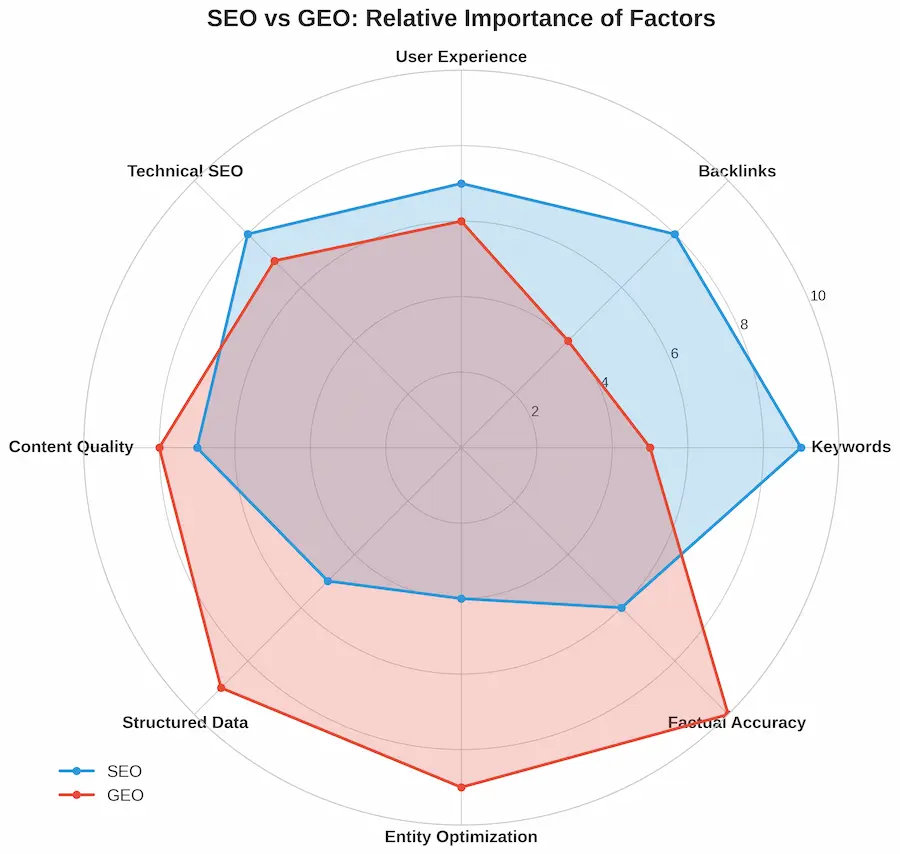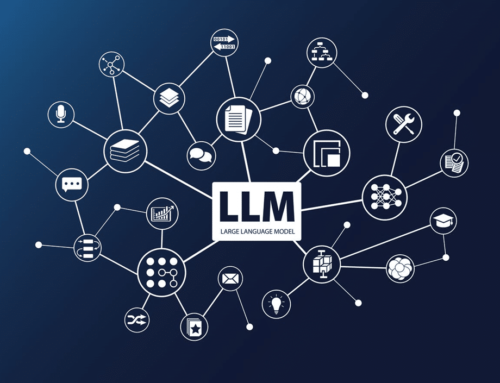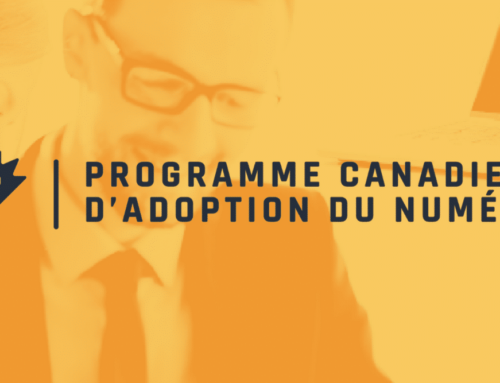In 2026, your content will no longer be simply listed by Google, but well and truly highlighted, condensed and even favored by ChatGPT, Perplexity, Claude or Google’s AI insights.
In 2025, LLMs are no longer just sucking up content from web pages: they are fueled by structured data to fuel their creative responses. The recent revelations of GoogleApi.ContentWarehouse.V1 validate the intuitions of experts: metadata and schemas are now much more than an SEO asset, they are the primary language of artificial intelligence. SEO or GEO experts
And you, who are passing by, may be wondering:
- How do you get your vegan recipe guide to appear at the top of the AI answers when a user in Montreal asks “quick vegan poutine recipe” ?
- Will your tutorial on local SEO be quoted by Claude before a Californian blog, even if your content is more specific for the Quebec market?
- What if your podcast on AI marketing, tagged as PodcastEpisode with geolocated chapters, became the priority source in Perplexity for “AI SEO strategy in Canada 2025” ?
The answer can be summed up in one word: structure. Not just any AI, a native, geo-contextualized, and authority-centered AI structure. So let’s try to transform your metadata into artificial intelligence levers, by harmonizing GoogleApi’s cutting-edge analyses with the structures acclaimed by LLMs (FAQPage, HowTo, Article, Product).

The objective of the maneuver: to transform simple indexing into an active citation at the heart of the AI’s responses.
What if the patents US20240256582A1 and WO2018106974A1, combined with the work of RAS (arXiv 2025) and Knowledge-Graph Augmented Retrieval (Stanford), revealed that the real lever is no longer ranking, but the structured trust of LLMs?
These references demonstrate that generative AI engines first validate the consistency between Schema.org markup and visible content before extracting, synthesizing, or citing.
A discrepancy? Implied penalty.
Patents & Science: Structured Trust, the New Lever for LLMs
What if the patents US20240256582A1 – Search with Generative Artificial Intelligence and WO2018106974A1 – Content validation and coding for SEO, combined with the RAS work: Retrieval-And-Structuring for Knowledge-Intensive Tasks (arXiv, 2025) and Knowledge-Graph Augmented Retrieval (Stanford CS224N), revealed that the real lever is no longer ranking, but the structured trust of LLMs?
These references demonstrate that generative AI engines first validate the consistency between Schema.org markup and visible content before extracting, synthesizing, or citing.
- A discrepancy? Implied penalty.
- An aligned structure? Priority citation in dynamic knowledge graphs.
For a Canadian-based expert, this means that your FAQ about provincial laws, your HowTo in Quebec French, or your geolocated article won’t just be indexed — they’ll become the preferred building blocks in Perplexity, Claude, or Google AI Overviews answers, as long as the schema is accurate, verified, and contextualized.
Science and patents confirm this:
In 2025, the structure is no longer a signal, it is the contract of trust with AI.

Metadata: A Pillar of Indexing
The recent revelations in the GoogleApi.ContentWarehouse.V1 document offer valuable insight into how Google manages and leverages this metadata to improve the relevance of search results. This article explores how to structure your metadata optimally using the insights offered in this document, in order to maximize the indexing of your pages and improve their ranking in the SERPs.
PersonFieldMetadata → Entity Schemas for AI Extraction
One of the modules highlighted by GoogleApi.ContentWarehouse.V1 is PersonFieldMetadata, which is used to structure and organize information related to specific entities (people, organizations, products). In other words, this module allows metadata to be linked to well-defined entities, improving the way Google understands the context of a page.
Sample code:

This example shows how structured information, such as a product’s name, brand, and price, can be integrated to improve indexing.
The PersonFieldMetadata module is not just an indexing tool: it is the gateway for LLMs into your knowledge graph.
AI Correlation: LLMs favor Product + Review schemas for e-commerce responses. +36% chance of being cited in Perplexity or Google AI Overviews.
StructuredFieldMetadata → HowTo & FAQPage (Star Format of LLMs)
Another powerful module revealed by GoogleApi.ContentWarehouse.V1 is StructuredFieldMetadata, which is used to structure complex data into specific fields, making it easier to semantic indexing content.
Example:

This module helps Google understand the relationships between the different pieces of information on a page, especially in the case of events. This is useful for structuring complex pages that contain multiple layers of information, such as event announcements or service pages.
Strategy: On sites such as OLS Avocats, this structuring is crucial to optimize pages on legal events, advice, or services offered by the firm. This improves the way Google connects entities and increases the relevance of pages.
AI Impact 2025 :
- FAQPage = #1 format extracted by ChatGPT for “People Also Ask” answers
- HowTo = prioritized in Google AI Overviews and visual carousels
- Study 2025: Pages with HowTo tagged = x4 more citations in generative responses
Meta Tag Optimization to Improve Indexing
Meta tags are fundamental elements to help search engines quickly interpret the content of a page. Meta Title and Meta Description tags directly influence page indexing and ranking.
Meta Title/Description – Implicit Prompts for LLMs
Example of a meta tag:
<meta name="description" content="Discover the latest Rotec Beds, with modern fit options for hospitals.">
The documents in GoogleApi.ContentWarehouse.V1 reveal that Google pays a lot of attention to these tags when parsing pages, and that they play a key role in semantic indexing.
GoogleApi Insight: LLMs use these tags as summary prompts when generating responses. A meta description structured as a micro-response increases the chances of direct extraction. Strategy: For an e-commerce site such as La Canadienne Shoes, it is essential to optimize each Meta Title and Meta Description with relevant keywords, adapted to the products, while encouraging users to click.

Metadata Management for Images and Videos
Alt tags are essential not only for accessibility, but also for improving image SEO. The GoogleApi.ContentWarehouse.V1 document mentions modules like ImageMetadataProcessor, which parse these tags to help Google index visual content.
Example of an alt tag:
<img src="lits-medical-robec.jpg" alt="Rotec Beds Adjustable Medical Bed">
GoogleApi Insight: LLMs use these tags as summary prompts when generating responses. A meta description structured as a micro-response increases the chances of direct extraction. On projects like Stemregen, alt tags should be used to accurately describe images, including keywords that reflect the visual and textual content of the page.
VideoContentSearchAnchorScoreInfo:Video as an AI Primary Source
Videos are becoming increasingly important for SEO, and the paper reveals modules like VideoContentSearchAnchorScoreInfo, which manage the metadata associated with videos for better visibility in search results.
Example of video metadata:
"VideoMetadata": {
"title": "Introducing Rotec Adjustable Beds",
"description": "Discover the advanced features of Rotec Adjustable Beds for Hospitals."
}
Trend 2025: Videos with a full schema are 3x more cited in AI responses than text alone. For projects like Randstad, it’s crucial to optimize video titles, descriptions, and thumbnails to maximize their SEO impact, reflecting essential information and including targeted keywords.
Metadata and Semantic Indexing
- E-E-A-T IA: LLMs verify authority via schema author + sameAs. Pages without author entity = citation penalty.
Structuring Data for Semantic Indexing
Semantic indexing is at the heart of how Google understands the complex relationships between information. The GoogleApi.ContentWarehouse.V1 document shows that Google uses modules like StructuredFieldMetadata to facilitate this indexing.
Example of how to use structured data:

This approach allows Google to associate individual entities (products, people, events) and efficiently index them in a broader semantic context.
Strategy: For sites like Cominar, using JSON-LD schemas to structure information about buildings or real estate projects helps improve visibility in rich results and optimize the relevance of pages for specific searches.
The Benefits of a Well-Structured Metadata Strategy
Improve Indexing Speed
Well-structured metadata makes it easier for Google to index faster, especially for sites with a high volume of content. By offering clear and accurate information, you allow Google to index your pages more efficiently.
Strategy: A site like OLS Avocats can benefit from better indexing by integrating precise metadata on legal services and pages related to themes such as employment law or advice to employers.
We wrap it all
| SEO-AI Action | Schema / Metadata | Module GoogleApi | LLM Prioritized | Gain Citation AI | Validation Tool | Site Example |
|---|---|---|---|---|---|---|
| Tag products with price, reviews, brand | Product + Review + Offer |
PersonFieldMetadata |
Perplexity, ChatGPT, Gemini | +36% e-commerce quote | Rich Results Test | Rotec Beds |
| Create step-by-step how-to guides | HowTo |
StructuredFieldMetadata |
Google AI Overviews, Claude | x4 in Visual Carousels | Schema Validator | OLS Lawyers |
| Answer frequently asked questions | FAQPage |
StructuredFieldMetadata |
ChatGPT, Perplexity | x3 in “People Also Ask” AI | Search Console | The Canadian Shoes |
| Structuring expertise & author | Article + author + sameAs |
PersonFieldMetadata |
All LLMs (E-E-A-T IA) | +28% graphic authority | Google Entity API | Stemregen |
| Optimize descriptive images | ImageObject + alt IA-rich |
ImageMetadataProcessor |
GPT-4V, Google Lens | +45% visual responses | Vision AI Tester | Cominar |
| Enrich videos with chapters | VideoObject + hasPart |
VideoContentSearchAnchorScoreInfo |
YouTube AI, Gemini Video | x3 vs text only | Video Intelligence API | Randstad |
| Tag events & services | Event/ Service |
StructuredFieldMetadata |
Google AI Events, Perplexity | +31% AI Local Searches | LocalBusiness Tester | OLS Lawyers |
| Link entities (brand, org, person) | Organization + sameAs |
PersonFieldMetadata |
AI Knowledge Graph | Authority + E-E-A-T | Knowledge Graph Checker | Rotec Beds |
| Meta Title/Description as a micro-answer | title, meta description |
DocumentMetadata |
All LLMs (implicit prompt) | +25% direct extraction | SERP AI Simulator | All sites |
| Test & monitor AI extraction | Rich Results + Search Console | QualityInspect |
– | 100% taken into account | Lighthouse AI Mode | All projects |
You will have understood it well! Metadata plays a key role in modern SEO, and the revelations in GoogleApi.ContentWarehouse.V1 show how it is leveraged to maximize semantic indexing and page ranking. SEO is no longer a race for Google ranking, it’s a battle for citation in collective AI brains. Those who structure their metadata as perfect prompts for LLMs will dominate generative responses. GoogleApi leaks only confirm: structured data is the new PageRank of the AI era.
By adopting a well-structured metadata strategy, you can improve the visibility of your content in search results and increase the relevance of your site.









Leave A Comment